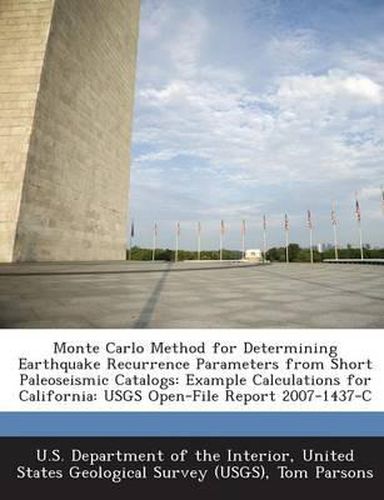Readings Newsletter
Become a Readings Member to make your shopping experience even easier.
Sign in or sign up for free!
You’re not far away from qualifying for FREE standard shipping within Australia
You’ve qualified for FREE standard shipping within Australia
The cart is loading…






Paleoearthquake observations often lack enough events at a given site to directly define a probability density function (PDF) for earthquake recurrence. Sites with fewer than 10-15 intervals do not provide enough information to reliably determine the shape of the PDF using standard maximum-likelihood techniques [e.g., Ellsworth et al., 1999]. In this paper I present a method that attempts to fit wide ranges of distribution parameters to short paleoseismic series. From repeated Monte Carlo draws, it becomes possible to quantitatively estimate most likely recurrence PDF parameters, and a ranked distribution of parameters is returned that can be used to assess uncertainties in hazard calculations. In tests on short synthetic earthquake series, the method gives results that cluster around the mean of the input distribution, whereas maximum likelihood methods return the sample means [e.g., NIST/SEMATECH, 2006]. For short series (fewer than 10 intervals), sample means tend to reflect the median of an asymmetric recurrence distribution, possibly leading to an overestimate of the hazard should they be used in probability calculations. Therefore a Monte Carlo approach may be useful for assessing recurrence from limited paleoearthquake records. Further, the degree of functional dependence among parameters like mean recurrence interval and coefficient of variation can be established. The method is described for use with time-independent and time-dependent PDF?s, and results from 19 paleoseismic sequences on strike-slip faults throughout the state of California are given.
$9.00 standard shipping within Australia
FREE standard shipping within Australia for orders over $100.00
Express & International shipping calculated at checkout
Paleoearthquake observations often lack enough events at a given site to directly define a probability density function (PDF) for earthquake recurrence. Sites with fewer than 10-15 intervals do not provide enough information to reliably determine the shape of the PDF using standard maximum-likelihood techniques [e.g., Ellsworth et al., 1999]. In this paper I present a method that attempts to fit wide ranges of distribution parameters to short paleoseismic series. From repeated Monte Carlo draws, it becomes possible to quantitatively estimate most likely recurrence PDF parameters, and a ranked distribution of parameters is returned that can be used to assess uncertainties in hazard calculations. In tests on short synthetic earthquake series, the method gives results that cluster around the mean of the input distribution, whereas maximum likelihood methods return the sample means [e.g., NIST/SEMATECH, 2006]. For short series (fewer than 10 intervals), sample means tend to reflect the median of an asymmetric recurrence distribution, possibly leading to an overestimate of the hazard should they be used in probability calculations. Therefore a Monte Carlo approach may be useful for assessing recurrence from limited paleoearthquake records. Further, the degree of functional dependence among parameters like mean recurrence interval and coefficient of variation can be established. The method is described for use with time-independent and time-dependent PDF?s, and results from 19 paleoseismic sequences on strike-slip faults throughout the state of California are given.